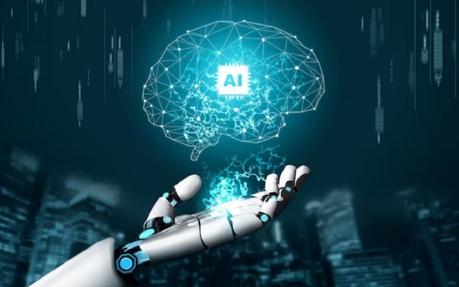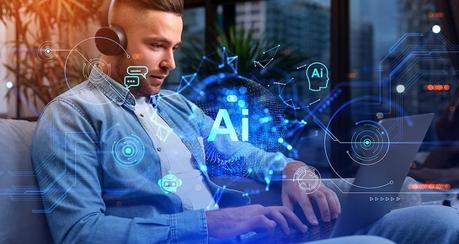
In today's tech-driven world, "Artificial Intelligence" (AI) is a transformative force shaping our daily lives. AI, born at the intersection of computer science, math, and psychology, seeks to impart machines with human-like intelligence, offering capabilities like learning, reasoning, and problem-solving. From smartphones to the Internet of Things (IoT), AI is everywhere. This article demystifies AI, explores its inner workings, and delves into real-world applications, from personal assistants to life-saving medical diagnoses.
AI delivers unprecedented convenience and efficiency. It combines advanced algorithms and data to enable machines to understand context, make decisions, and improve continuously. From personal assistants to healthcare and transportation, understanding AI's basics and real-world impact is essential in this AI-driven era. By grasping AI's mechanisms, we gain insight into its profound influence on our world and our future.
What is Artificial Intelligence?
Artificial Intelligence is a multidisciplinary field of computer science that seeks to create systems capable of performing tasks that typically require human intelligence. At its core, AI aims to replicate human-like intelligence in machines. This involves the ability to learn from data, reason, adapt to changing circumstances, and interact with the environment.
AI in Daily Life
With a foundational understanding of how AI works, let's explore some of the ways it impacts our daily lives:
AI in Personal Assistants
Voice-activated virtual assistants like Siri, Alexa, and Google Assistant utilize AI and NLP to understand and respond to user commands. They help with tasks such as setting reminders, answering questions, and controlling smart home devices, making daily life more convenient.
AI in Healthcare
AI plays a vital role in healthcare, from analyzing medical images like X-rays and MRIs to assisting in drug discovery and development. Predictive analytics powered by AI can also improve patient care by identifying at-risk individuals and suggesting preventive measures.
AI in Transportation
The development of autonomous vehicles is one of the most visible AI applications. Self-driving cars use AI algorithms to navigate and make real-time decisions, potentially revolutionizing the future of transportation. AI also enhances traffic management and optimizes routes for ride-sharing services.

Key Components of AI
Artificial Intelligence comprises several key components, each contributing to its diverse range of applications:
- Machine Learning: At the heart of AI, machine learning is a subset that focuses on developing algorithms capable of learning from data. These algorithms can analyze patterns, recognize trends, and make predictions or decisions based on the information they've gleaned. Machine learning models are the workhorses behind many AI applications, from image recognition to recommendation systems.
- Neural Networks: Drawing inspiration from the human brain, neural networks are computational models made up of interconnected nodes or neurons. These nodes process and transmit information, allowing the network to learn complex patterns and relationships within data. Deep neural networks, often referred to as deep learning, have powered breakthroughs in areas like image and speech recognition, as well as natural language processing.
- Natural Language Processing (NLP): NLP empowers machines to understand, interpret, and generate human language. This technology enables more intuitive interactions between humans and machines, whether it's through chatbots that provide customer support, voice assistants that respond to spoken commands, or language translation tools that break down language barriers. NLP continues to advance, enhancing the quality and accessibility of communication in our digital age.
- Computer Vision: Computer vision is another critical component of AI, allowing machines to interpret and understand visual information from the world. Through image and video analysis, AI systems can recognize objects, people, and even emotions. Applications range from facial recognition for security purposes to medical image analysis for diagnosing diseases.
- Reinforcement Learning: Reinforcement learning is a subset of machine learning where agents learn by interacting with an environment. They receive feedback in the form of rewards or penalties based on their actions, helping them refine their strategies over time. This approach is particularly valuable in training AI agents for tasks like autonomous driving and game playing.
- Robotics: Robotics is an interdisciplinary field that combines AI with mechanical engineering. AI-powered robots can perform tasks autonomously or collaboratively with humans. They find applications in manufacturing, healthcare, and even exploration, performing tasks that are dangerous, repetitive, or precise.
Ethical Considerations
While AI offers numerous benefits, it also raises ethical concerns. Bias in AI algorithms, privacy issues, and the potential for job displacement are pressing topics that require careful consideration and regulation.
Conclusion
Artificial Intelligence is not just a buzzword but a transformative force that permeates our daily lives. Its intricate processes, from data acquisition to model training and continuous learning, empower machines to perform tasks previously thought possible only by humans. As we witness AI's expansion into new domains, it's essential to stay informed about its capabilities, benefits, and ethical implications. AI is not merely a tool; it's a catalyst for change, shaping the future of how we live and interact with technology. Embracing it wisely and responsibly will define our path forward in the age of artificial intelligence.

